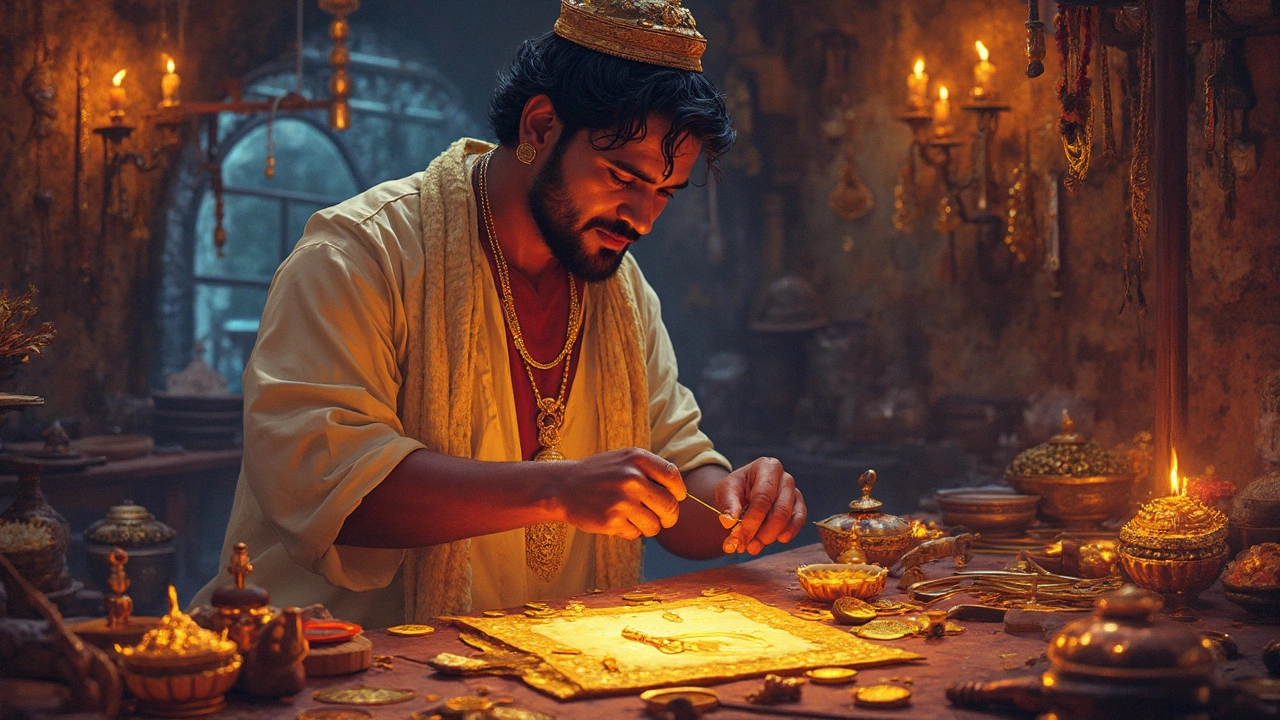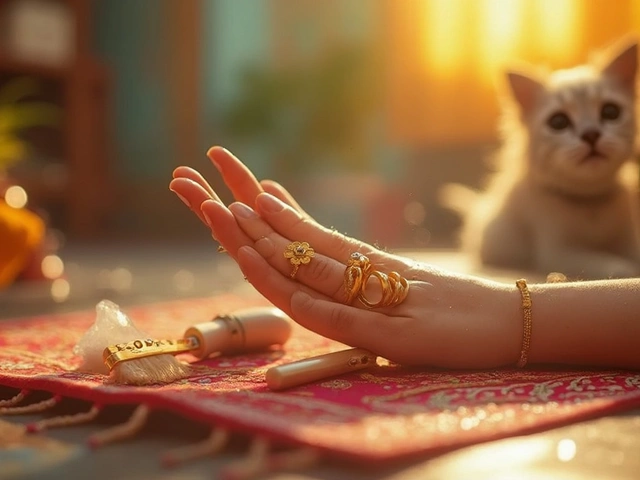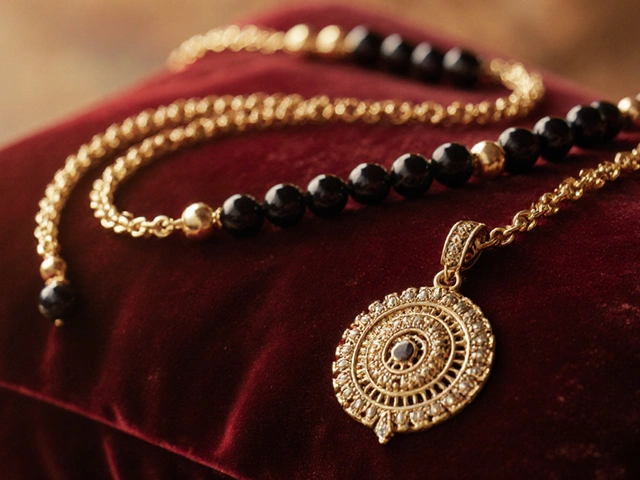Temple Jewelry India: Styles, Meaning, and How to Buy
If you’ve ever seen a temple necklace or a pair of intricate earrings in a Bollywood song, you know they’re eye‑catching. But beyond the sparkle lies a whole world of history, symbols, and craftsmanship that makes temple jewelry a favorite for weddings, festivals, and everyday pride.
Key Features That Define Temple Jewelry
First off, temple jewelry is all about bold motifs. Think of deities, lotus petals, peacocks, and geometric arches. These designs aren’t random; they echo the carvings you’d find on South Indian temples, especially in Tamil Nadu and Karnataka. The gold is usually heavy, giving the pieces a solid feel that says “I’m built to last.”
Most pieces use 22‑carat gold (often stamped 875) because it balances richness with durability. You’ll also spot enamel work, tiny rubies, and sometimes even tiny mirrors that catch light like a dance floor. The enamel adds color without making the piece too flashy, keeping the overall vibe elegant.
Another hallmark is the use of "Meenakari"—a technique where artisans paint tiny patterns onto the gold. It’s a slow process, and each swirl tells a story of patience. When you wear a temple necklace, you’re actually wearing a piece of art that took weeks, sometimes months, to finish.
How to Choose the Right Temple Piece and Keep It Shining
Start by deciding where you’ll wear it. A heavy necklace works great with a simple saree, while a lighter pair of temple earrings can add sparkle to a casual kurta. Check the hallmark—look for "875" for 22‑carat gold or "925" if it’s silver‑based. A genuine stamp protects you from cheap knock‑offs.
Next, think about the design you connect with. If you love mythology, a Ganesha pendant might feel right. If you’re into nature, a lotus motif adds a fresh vibe. Try the piece on; it should sit comfortably without digging into your skin.
Maintenance is simple but essential. Wipe the gold after every wear with a soft cloth to remove sweat and perfume residue. For enamel work, avoid harsh chemicals—just a mild soap and water rinse will do. Store each item separately in a soft pouch to prevent scratches, especially for pieces with mirror work.If you ever need a polish, take it to a trusted jeweler who knows temple jewelry. They’ll use a non‑abrasive method that keeps the enamel intact. A yearly check also helps spot loose stones before they fall out.
Buying online? Look for sites that show clear photos, detailed hallmarks, and a return policy. Reading customer reviews can give clues about the seller’s reliability. If you can, ask for a certification that lists the gold purity and any gemstones used.
Lastly, remember that temple jewelry isn’t just an accessory—it’s a cultural statement. Wearing it links you to centuries of tradition and showcases Indian artistry to the world. Whether you’re picking a piece for a big celebration or just because you love the look, the right temple jewelry can become a family heirloom that tells your story for generations.
Where Do Indians Get Their Temple Jewelry From?
Temple jewelry in India comes from small workshops in Tamil Nadu and Andhra Pradesh, where artisans handcraft sacred designs passed down for centuries. It's not bought-it's inherited, made with skill, and rooted in temple traditions.
Nagas Gold: Shimmering Elegance of Temple Jewelry in India
Nagas gold refers to a special variety of Indian temple jewelry, renowned for its unique craftsmanship and cultural significance. Often adorned with intricate designs and rich motifs, these pieces symbolize divine connection and tradition. Understanding its origins and designs can deepen appreciation for this exquisite art form, offering a glimpse into India's artistic heritage. This article explores fascinating aspects of Nagas gold, from its historical roots to tips on selecting authentic pieces.






